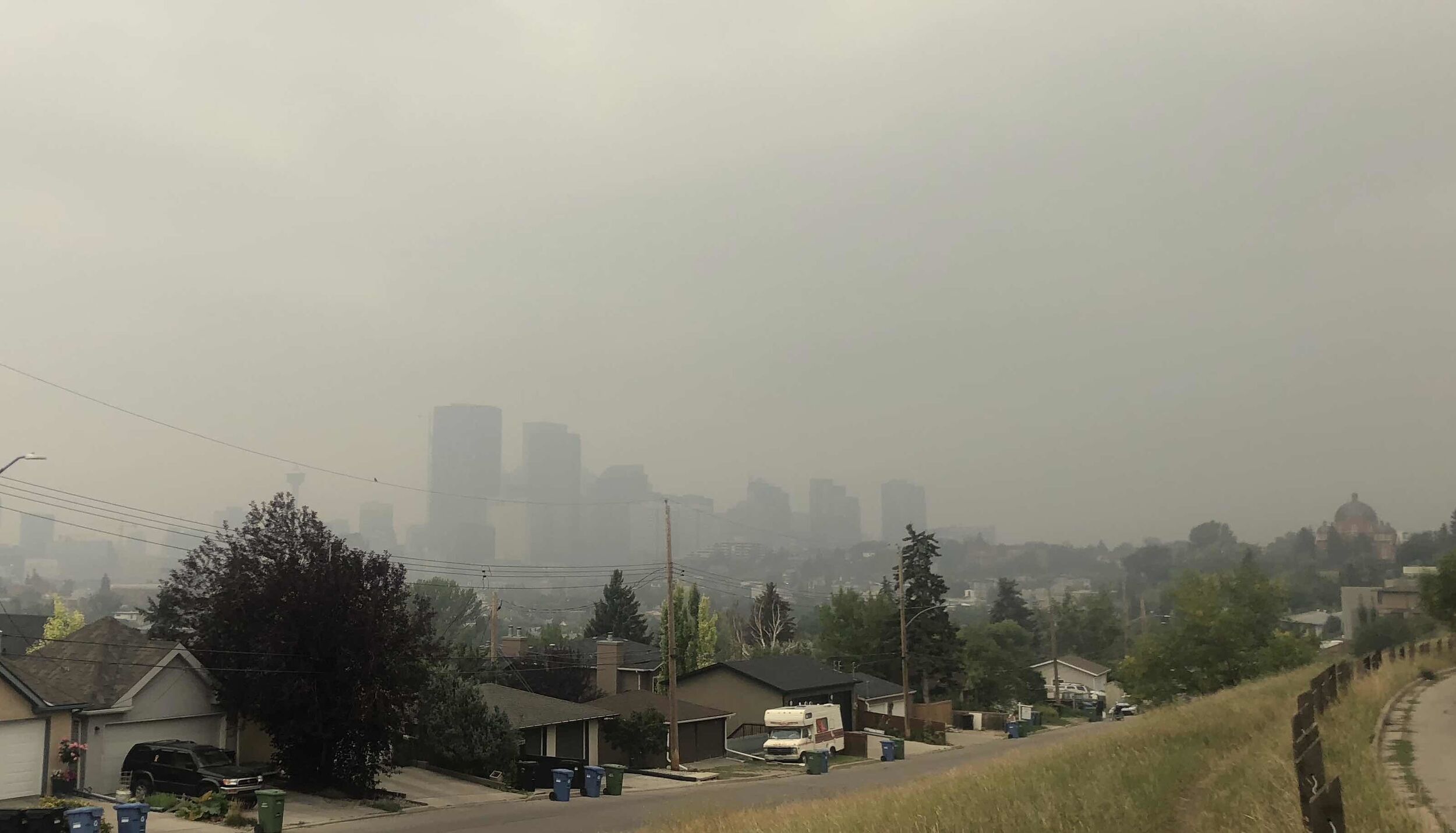
Calgary's downtown skyline in August 2018. Photo: Jeremy Klaszus
The climate cost of a sprawling city
Calgary’s 2011 climate plan failed. Will the new one work?
After experiencing its smokiest summer on record in 2018, Calgary is bracing for a world of extreme weather due to climate change.
Temperatures in Alberta have increased 1.4°C since a century ago, with most of that increase occurring since 1970. The days of sweltering heat have doubled since 1950.
And it’s going to get worse.
By 2050, we’re likely to see much more snow and less summer rain, according to models published by the City of Calgary. The number of heatwave days per year is set to triple by 2050, from nine to 27.
These changes in climate are likely to increase the frequency of storms year round, which will bring hail, lightning and flooding. On the other end of the spectrum, southern Alberta will see more multi-year droughts and summer smoke from wildfires.
Aware of the coming threat, city hall adopted an ambitious climate plan in 2011. It aimed to cut greenhouse gas emissions by 20% over 2005 levels by 2020.
The city is nowhere near that target. Instead, as of 2017, emissions have gone up by 16%.
Unfortunately we are excellent at developing award-winning plans and ignoring them. And that really needs to change.”
But now the city has been forced into action.
Dick Ebersohn, manager of city hall’s climate and environment department, says major insurance companies were threatening not to insure the city in the future without a better plan in place.
So last summer, council quietly and unanimously passed the Climate Resilience Strategy, a 97-page policy report meant to guide Calgary to a more climate-conscious future.
“The longer we wait to begin decreasing emissions, the more drastic and severe the climate change impacts will become," reads the report. "And the more expensive it will be to reduce emissions to safe levels and recover from extreme events.”
Like Calgary’s 2011 climate plan, the new one aims to lower the city’s GHG emissions by 80% over 2005 levels by 2050.
But will this time be different?
“Unfortunately we are excellent at developing award-winning plans and ignoring them,” said Councillor Druh Farrell. “And that really needs to change."
Calgary's dubious distinction
When stacked up against other Canadian cities which have recently disclosed their statistics, Calgary is second only to Toronto—which has roughly double Calgary’s population—in total greenhouse gas emissions.
Per capita, Edmonton has the most emissions, followed closely by Calgary. Both cities have more than double Toronto's emission levels per capita.
Much of this is attributable to one of Calgary’s defining features: urban sprawl.
“Calgary, and neighbouring cities, continue to build subdivisions that lock in energy and emission patterns,” said Andrew Sudmant at the University of Leeds.
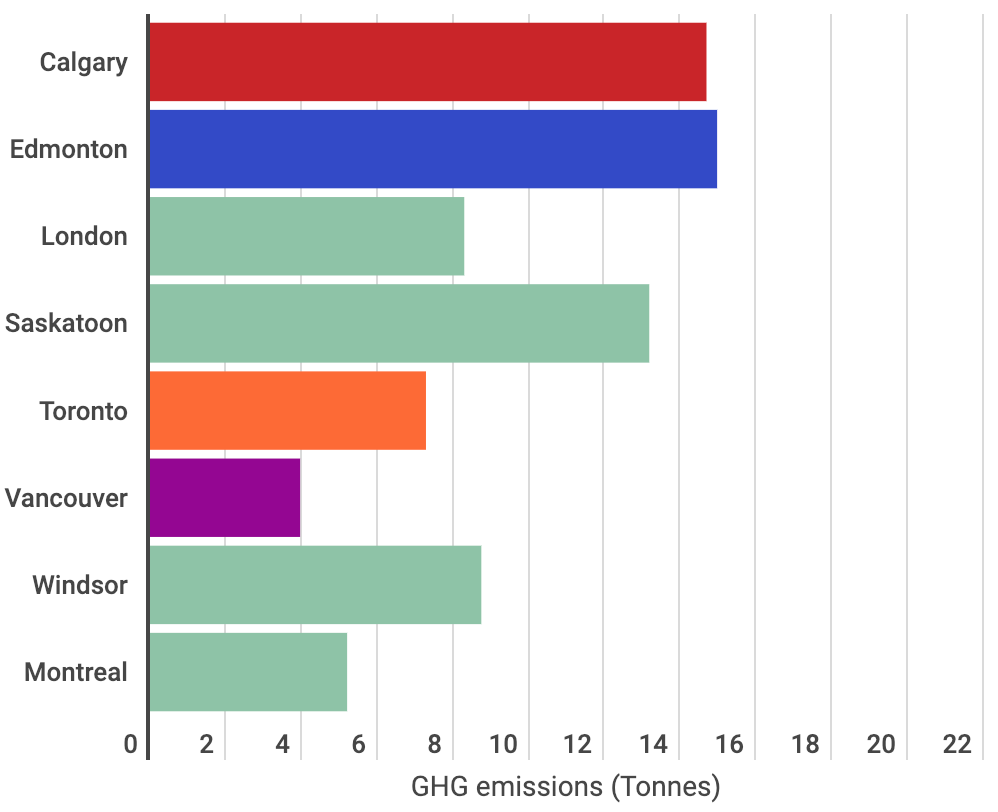
Sudmant is a research fellow with the School of Earth and Environment, and the lead author of a recent climate change study conducted by the University of Leeds and the University of Calgary.
Calgary’s climate plan is largely based on this study.
“A new low-density subdivision forces families to have two cars to drive to work and school, makes provision of amenities costly, prevents district energy grids from being cost effective,” Sudamant wrote by email.
“Land use decisions last for decades, if not centuries, and are therefore by far the biggest issue.”
Farrell agrees. “We need to build our city differently,” she said. “The majority of our greenhouse gases are generated by how we travel and our buildings—and we have power over those decisions.”
About two-thirds of Calgary's emissions are from buildings, according to the city. The other one-third is from transportation.
Calgary, and neighbouring cities, continue to build subdivisions that lock in energy and emission patterns.”
A major factor in Calgary’s emissions increase, said Ebersohn, is that Alberta still gets so much of its electricity from coal—about 50%, according to the most recent National Energy Board figures.
“That will only taper down by 2030 when we get off coal completely,” he said.
The resilience strategy calls for $113B of investment from the city, industry and citizens between now and 2050 to bring emissions down to the set targets.
But cost savings of energy efficiency would eventually make the investment cost-neutral, leading to savings of up to $5.6B annually.
"Climate action is linked to a wide variety of benefits: cleaner air, better mobility, more jobs,” Sudmant said. “Places that act on climate are places where people want to live.”
'Look to the budget' for real action
Farrell describes the city’s plan as “decent” but “incredibly modest.”
“You can determine a city’s values by their budget, not their plans," said Farrell. "So look to the budget to determine whether we’re taking this seriously.”
That’s more difficult than it sounds, even for people inside city hall.
Council passed their four-year budget plan in November. But what is being spent on climate action is unclear. A city spokesperson said there isn’t a clear dollar figure because climate actions are being integrated into everyday operating procedures of all departments.
This haziness is worrisome to Farrell.
“I was assured that climate mitigation was included in everything that we do,” she said. “But we need to see that line of sight. Otherwise, it will go by way of other targets that we blow spectacularly.”
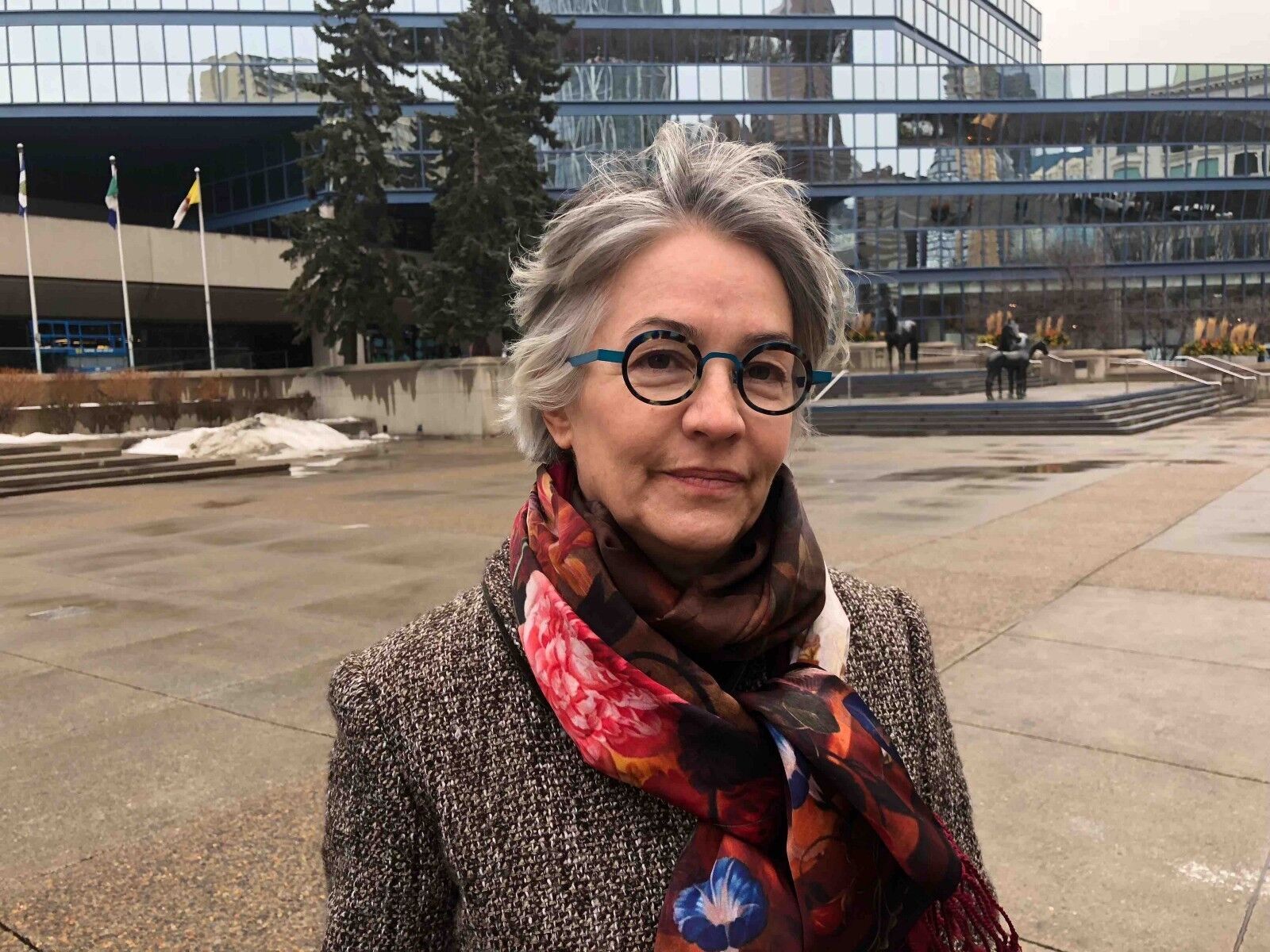
In response to concerns that there would be no follow-through, city hall recently created a climate panel of interested parties, from homebuilders to academics.
“We are trying to set up a solid governance system that’s transparent,” said Ebersohn. “That we can report back to council on what’s happening, what’s not happening, and really keep business units’ and departments’ feet to the fire.”
Over 200 city staff were involved in preparing the climate plan, but only four City of Calgary employees are currently dedicated to climate action full time, set to grow to nine later this year.
By contrast, in Edmonton, the equivalent department has 28 full-time staff. In Vancouver, about 20 employees work on climate action full-time.
Places that act on climate are places where people want to live.”
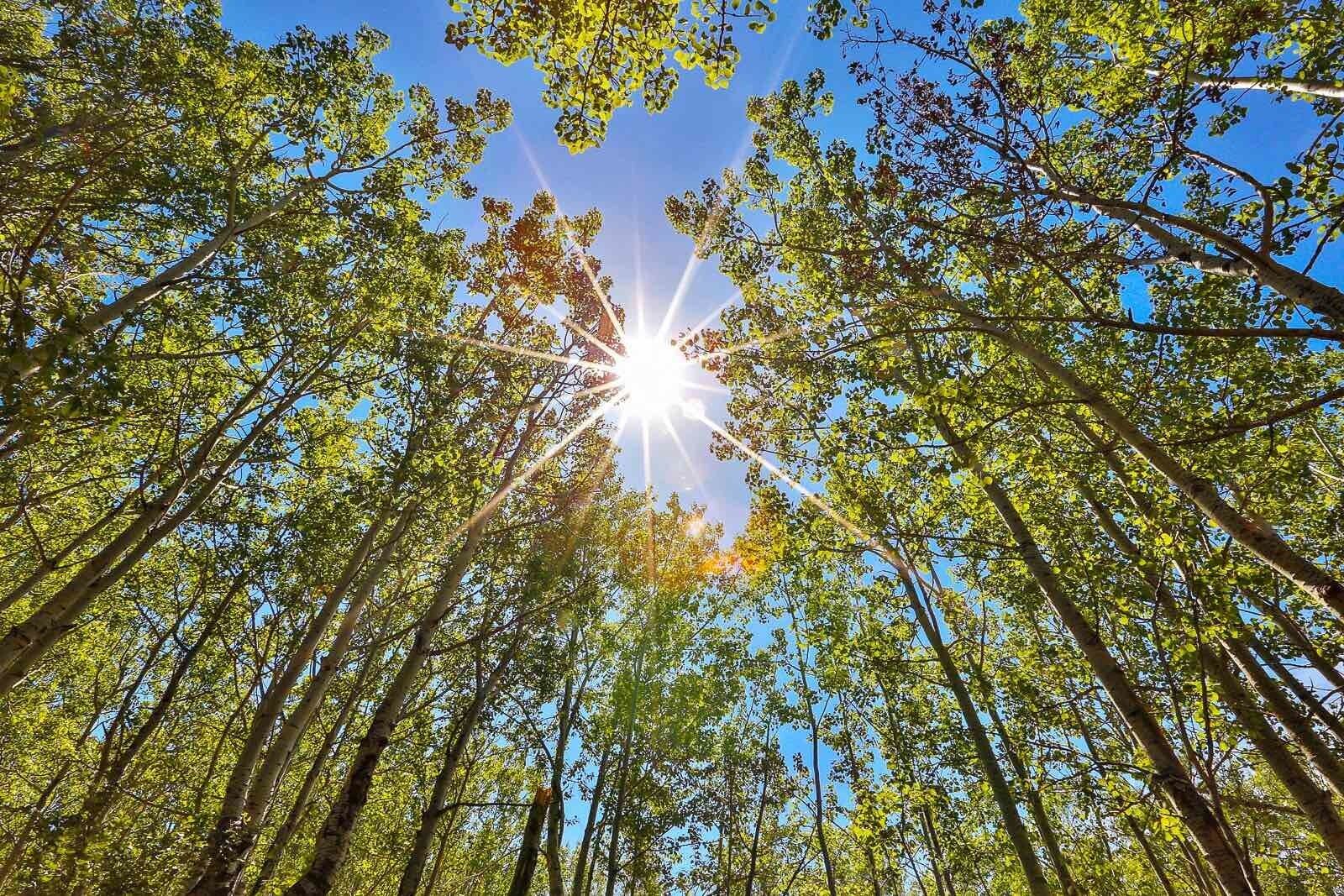
A new grassroots hub for climate action
Joe Vipond is pushing for more transparency on this file. He’s the interim chair of the Calgary Climate Hub, a new not-for-profit group that has its genesis in former U.S. Vice President Al Gore’s Climate Reality Project.
A sister organization in Montreal sought to establish climate action hubs in Canadian cities to coordinate everyone’s actions.
“The problem with Calgary was we didn’t really have a lot going on,” Vipond said.
But the few groups that did exist are now working together.
“It’s not bearded hippies, and it’s not all old guys with grey hair, and it’s not all young rabble rousers,” said Vipond. “It’s actually a combination of those and more that are working on this. We have huge diversity in gender, age and ethnic background.”
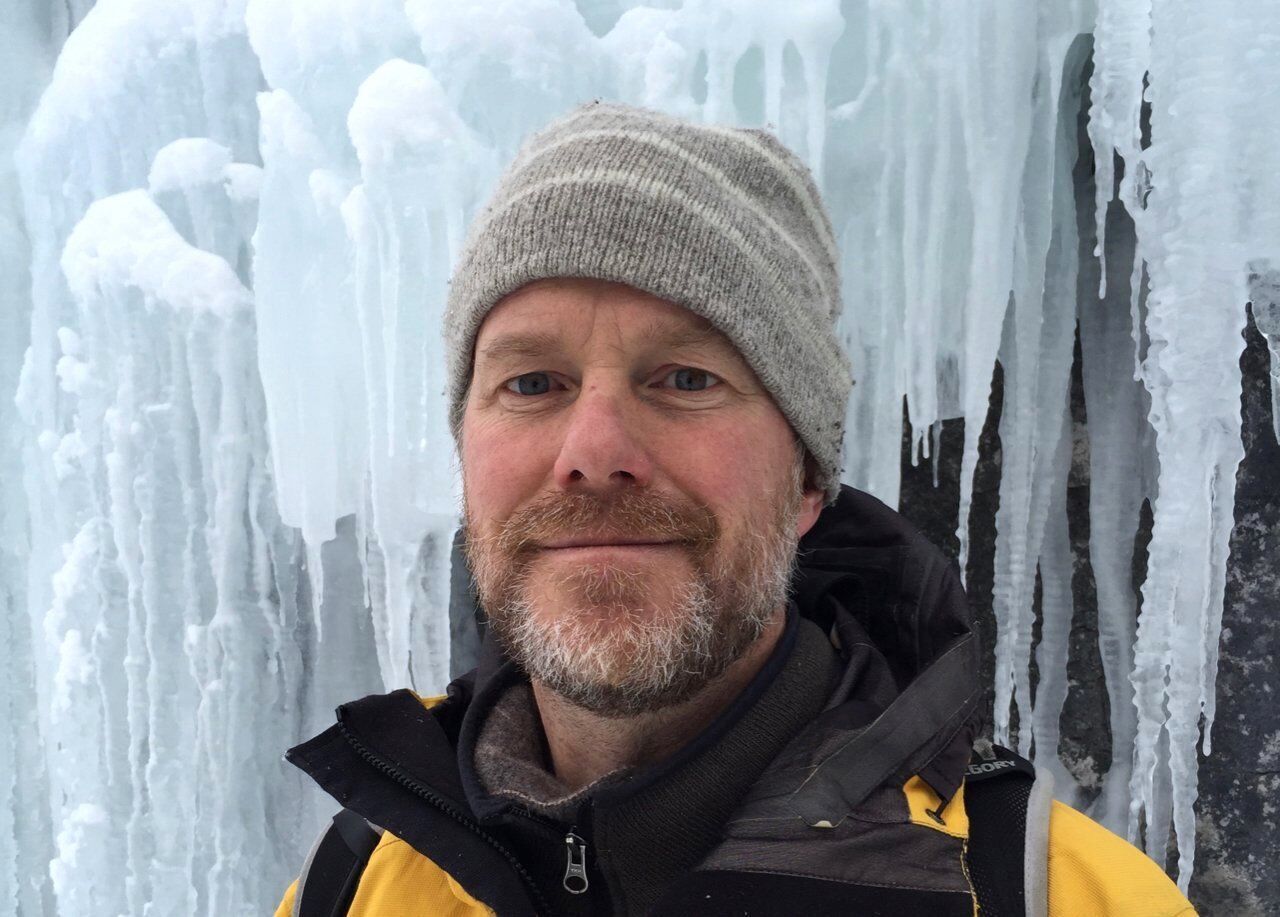
Vipond isn’t new to climate advocacy.
By day, he’s an emergency physician. He’s also on the board for the Canadian Association of Physicians for the Environment, and he advocated for the phase out of coal long before the Alberta NDP government legislated a phase out by 2030.
When asked why he spends his extra time on advocacy, he exuberantly answers with a question of his own. “Why the hell isn’t everybody caring about this?”
“If your house is on fire, you try to put it out. It’s amazing to me how many people out there aren’t desperately trying to fix this. It’s probably a little bit about a lack of knowledge; it’s probably a bit of willful ignorance because it’s a big, scary topic."
Looking at the city’s climate plan, Vipond is reluctant to do much cheering due to the “abject failure” of the 2011 plan.
“It’s really going to be dependent on strong administration and continued support from councillors,” Vipond said. “Otherwise, this is just going to be like the last plan.”
If your house is on fire, you try to put it out. It’s amazing to me how many people out there aren’t desperately trying to fix this.”
The action items have varying degrees of clarity and boldness, ranging from transit to community planning to waste management.
In 2019, Calgarians will start to see some of the changes, including more charging infrastructure for electric vehicles and an update to the current solar bylaw, making it easier for Calgarians to install solar photovoltaic panels.
Should Calgary achieve its targets, the city would be at least partially conforming with the most recent Intergovernmental Panel on Climate Change (IPCC) recommendations to keep the global temperature rise between 1.5 and 2°C.
“The majority of global cities do not have urban emissions targets,” said Sudmant. “Within those cities that do have targets, Calgary’s targets put them among a relatively small number of cities whose targets are in line with the IPCC.”
“Relative to cities with ambitious targets, however, few are as far away from their targets as Calgary.”
Looking to the future
Climate policy will be front and centre this year as the province and country face elections.
The city plan relies on certain aspects of federal and provincial policy to continue. At the federal level, this includes energy efficiency standards for buildings and vehicles.
At the provincial level, the most critical pieces include the carbon tax and the phase out of coal with a new focus on renewables.
Farrell is optimistic that regardless of the outcomes of both elections, Calgary can still move in the right direction.
"I would argue that that prosperity, if it continues to be reliant on oil and gas, will have a limited time frame," said Farrell. "The world is changing and we need to adapt with it or be left behind, and that’s already happening."
“I certainly hope that climate denial—the denial of the science—is a short blip in our history. It will be impossible to ignore.”
For his part, Vipond says climate action is the antidote to fear.
“You have to be able to look your kids in the eye—your nephews, your nieces, yourself—when things get bad and be able to tell yourself and them, you did as much as you could,” he said.
“I’m not willing to give up.”
Sarah Lawrynuik is a Calgary-based freelance journalist focusing on politics and energy/climate policy.
We'd love to have you on board as a member. If you value thoughtful, independent local journalism, become a Sprawler today!
Support independent Calgary journalism!
Sign Me Up!The Sprawl connects Calgarians with their city through in-depth, curiosity-driven journalism. But we can't do it alone. If you value our work, support The Sprawl so we can keep digging into municipal issues in Calgary!



